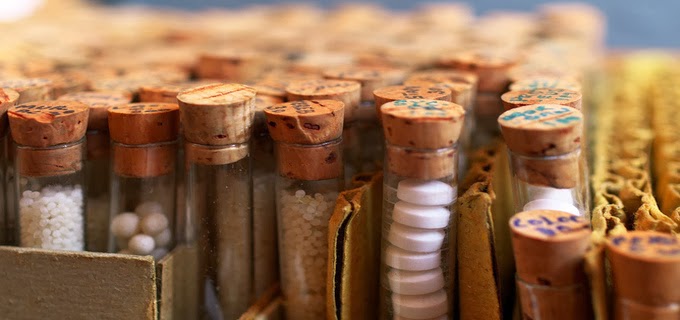Sanguinaria is derived from the word Sanguine, which means
having the
colour of blood or mixed with blood. The word Sanguine fully reflects the
nature of the remedy. The face of a Sanguinaria patient becomes red and
hot. Burning hot and redness are its peculiar features. In Sanguinaria, the headache
begins at the nape and then becomes localised in the right temple area or in the right eye. The pain localised in the left eye is indicative of Spigelia. The ailments of Sanguinaria are due to blood disorder while those of
Spigelia result from hypersensitivity of the nerves.
Their nature is thus obviously different. In Sanguinaria the painful
area throbs, while in Spigelia, the pain is of lightning nature. In
Sanguinaria, like Lachesis, sleep aggravates the symptoms.
In Sanguinaria, the headache is associated with severe
nausea, which causes further aggravation. On
vomiting, the patient feels much better. In Sanguinaria, the palms of
the hands and the feet feel burning hot. The patient keeps the
feet out of the bed. In Pulsatilla, these symptoms pertain only to women.
However in Sanguinaria, the symptoms affect men and women
equally. Sanguinaria is a relatively short acting remedy. Thus, it is not
of much use in chronic diseases, except those of the chest, e.g.,
tuberculosis. In tuberculosis,
it has proven
to be very effective and long acting. In
Sanguinaria, the patient feels a lot of discomfort
in the trachea and the upper respiratory passages,
on coughing and even on talking. The patient feels as if a
ball of air is stuck in the throat. He feels relieved on its expulsion.
Sanguinaria is effective in the treatment of tuberculosis and other chronic chest
diseases by way of relief of the symptoms, but it does not
offer complete cure. Sulphur, Silicea and Graphites have the capability to cure
tuberculosis,
though the treatment is usually begun with the milder type of remedies,
Sanguinaria 30 being one amongst those. High potency Sanguinaria is
not usually required.
Sanguinaria is the complete antidote for the allergy to the smell of
roses.
In Sanguinaria, the headache sometimes recurs every seven days. Other symptoms of Sanguinaria being present, it can be very
useful in the treatment of left-sided pain as well. Frozen shoulder, pain and
stiffness of the right side of the neck and the upper back respond very well to Sanguinaria. However, Sanguinaria is not of
much avail
in the treatment of pain resulting from external injuries. Rather
it is the
optimal remedy for deep-seated, internal diseases. In Sanguinaria, the face of the patient always stays
red. The patient develops headache on improper eating
and on eating spicy, oily food. The
stomach feels burning.
The discharges are acidic.
The patient feels nauseated. The vomiting, being strongly
acidic, can corrode the throat. Sanguinaria is significantly
effective in the treatment of extremely severe acidity of the
stomach, if other symptoms of Sanguinaria are also present. The
appetite increases. However, when the disease progresses further, the
stomach fails and vomiting sets in. Then
though still feeling hungry, the patient does not like to eat.
Sanguinaria is also useful in treating the asthma secondary to the
hyperacidity
of the stomach, besides Nux Vomica. The stomach bloats with gas. The patient may get sudden severe diarrhoea, like Croton, Aloe and Podophylum. Sanguinaria may be of use in
the treatment of
diarrhoea beginning on the sudden cessation of nasal cold.
In Sanguinaria, the menstrual
bleeding and leucorrhoea are very offensive.
Sanguinaria is used in the treatment
of menopausal symptoms as well as
premenstrual nausea and severe abdominal pain. During coughing,
the patient feels a hissing
sound in the throat that wakes him up. The patient feels
better on sitting up. This cough is related to the stomach. The symptoms
of Sanguinaria become worse upon sleeping, resting and after
eating fruit. The person feels better on movement and sitting up in the
bed.





